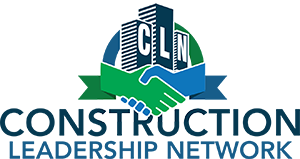
Imagine knowing exactly when that HVAC unit will fail–three weeks before it happens.
Picture identifying construction conflicts before crews ever set foot on a site. Or optimizing building efficiency in real-time throughout a project’s entire lifecycle.
This isn’t science fiction; it’s the reality that digital twin technology is bringing to construction companies today.
While many contractors are familiar with Building Information Modeling (BIM), digital twins take that concept several steps further. For construction companies, this emerging technology offers a powerful solution to some of the industry’s most persistent challenges, from project delays and cost overruns to inefficient maintenance and unexpected equipment failures.
What Are Digital Twins?
A digital twin is essentially a virtual replica of a physical building or construction project that updates in real-time. Think of it as a living, breathing digital model that mirrors every aspect of your actual project, including structural components, mechanical systems, environmental conditions, and operational performance.
The technology combines three essential components:
- Physical Asset: Your actual building or construction project
- Digital Model: The virtual representation with detailed specifications
- Data Connection: Sensors, IoT devices, and data inputs that continuously feed information from the physical world into the digital model, creating an accurate, up-to-date virtual representation
Unlike traditional 3D models or static blueprints, digital twins evolve throughout a project’s lifecycle. They capture real-time data on everything from concrete curing temperatures during construction to HVAC performance years after completion.
The Evolution of Construction Planning
For construction planning, digital twins offer unprecedented visibility and control. Instead of relying on experience and estimates, contractors can simulate different construction scenarios before breaking ground.
This capability addresses one of the industry’s most persistent challenges: project delays and cost overruns.
Digital twins enable “what-if” analysis at a previously unimaginable scale. Want to know how changing the construction sequence might affect your timeline? The digital twin can simulate various scenarios, identifying potential bottlenecks and optimizing resource allocation. Some contractors report reducing project delays by up to 30% through this predictive capability.
The technology also improves coordination among trades. When all subcontractors work from the same real-time digital model, conflicts between electrical, plumbing, and HVAC systems can be identified and resolved before they become expensive field problems. This reduces significant cost factors that can affect most construction projects.
Revolutionizing Maintenance and Operations
Where digital twins truly shine is in long-term facility management and maintenance. Traditional maintenance approaches are either reactive (fix it when it breaks) or based on scheduled intervals (replace it every five years).
Digital twins enable predictive maintenance, using real-time data to predict when components will need attention.
How Predictive Maintenance Works: A digital twin can monitor an HVAC system’s performance patterns, energy consumption, and environmental conditions to predict when filters need changing or when components are approaching failure.
This data-driven approach delivers measurable results:
- 25% reduction in maintenance costs
- 20-30% extension of equipment life
- Elimination of most emergency repairs
- Improved customer satisfaction
Business Impact for Contractors: The implications are significant for contractors who provide ongoing maintenance services or offer extended warranties.
Instead of costly emergency repairs, you can schedule maintenance during convenient times, improve customer satisfaction, and reduce overall service costs. This creates new revenue opportunities while strengthening client relationships through proactive service delivery.
Integration with Existing Systems
One concern many contractors have is whether digital twin technology will require completely overhauling existing systems. The answer is encouraging. Modern digital twin platforms are designed to integrate with commonly used construction software, from project management tools to accounting systems.
Many contractors begin with basic implementations, perhaps focusing on a single building system or specific project challenge. As teams become comfortable with the technology and see tangible benefits, they gradually expand its application. This phased approach minimizes disruption while building internal expertise.
Cloud-based platforms have also made digital twins more accessible. Instead of requiring significant upfront infrastructure investments, contractors can access sophisticated digital twin capabilities through subscription-based models that scale with their needs.
Real-World Applications and Success Stories
The potential of digital twins becomes clear through real-world applications. Construction industry thought leader Paul Doherty, a keynote speaker at CLN’s recent conference, has been instrumental in demonstrating how digital technologies, including digital twins, can transform construction workflows and improve project outcomes.
Heathrow Terminal 5: This major airport project demonstrated digital twin capabilities during construction by creating virtual models to analyze critical environmental factors including air circulation, lighting conditions, energy usage, and climate control throughout the terminal space. The technology enabled the team to optimize mechanical systems and achieve sustainability targets while coordinating among multiple stakeholders.
Corgan’s LAX Airport Project: When architecture firm Corgan began working on a $1.6 billion aviation project at the Los Angeles International Airport (LAX), they integrated digital twin technology into their construction workflow. Using the Matterport Pro2 camera, Corgan scans existing conditions, captures key milestones, creates virtual punch lists, and shares 3D digital twins with owners, contractors, and facility managers. The first phase involved a utility tunnel measuring 575 feet long and 18,000 square feet, which they documented in just 46 scans completed in less than an hour.
Suzhou Center Development: The Suzhou Center, an impressive mixed-use development, employed digital twin technology to streamline its construction. Digital twins were used to simulate the behavior of the building’s complex structures, optimize energy consumption, and monitor environmental conditions. This technology facilitated data-driven decision-making, enabling architects and engineers to create a sustainable and visually striking building.
These examples showcase projects that demonstrate the comprehensive capabilities of digital twin technology. Cloud-based digital twin platforms and affordable scanning technologies have made these tools accessible to contractors, allowing firms to implement digital twins for individual buildings, renovation projects, or specific building systems without the massive infrastructure investments once required.
Looking Forward
As the construction industry continues its technological transformation, digital twins represent a logical next step for companies already using BIM, project management software, or other digital tools.
The technology addresses fundamental industry challenges:
- Improving project predictability
- Reducing costs
- Enhancing long-term building performance
For contractors, the key is starting with specific, manageable applications rather than attempting comprehensive implementation immediately. Whether it’s monitoring concrete curing on your next project or providing predictive maintenance services to existing clients, digital twins offer practical solutions to real business challenges.
The construction industry’s labor shortage and increasing project complexity make digital twins not just an opportunity, but increasingly a necessity for staying competitive. Companies that begin exploring this technology today position themselves as leaders of the industry tomorrow.
Ready to explore new opportunities and innovations in the construction business?
Connect with other forward-thinking construction leaders through CLN’s virtual peer groups and get practical insights about implementing solutions that drive real results.
